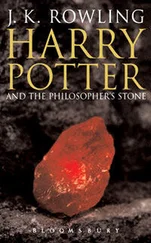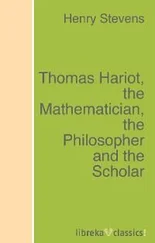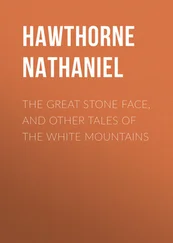“What do you think about that?” Helen asked her friend.
“I guess I’m glad that you were so bold as to introduce yourself, but I am pretty confused about where all this is going. Are you really thinking that we should follow up with an office visit?”
“Sure. I think it would be very rude not to – after all the effort he put forth to make us feel welcome.”
Helen awoke unusually early the next morning. It was Wednesday and she had no classes until 11:00 a.m. On most Wednesday mornings, she caught up on any sleep she had missed during the early part of the week while preparing for a special homework assignment or major test. On this day, she found herself thinking about Professor Wood’s sculpting project. Clearly he had a well-defined prototype of the final product. But it would take a lot more work with the chainsaw or, more likely, a mallet and chisel to get from the smooth, reasonably symmetric column of wood that she had examined yesterday to the elaborate and detailed United States of the Elements that the much smaller model represented.
She also thought about how excited the professor was when she mentioned that she was interested in Philosophy. Modern alchemy , the professor had said. What could he possibly have meant by that?
Helen got out of bed and sat down at her computer. She entered the word alchemy into her search engine and chose the link to Wikipedia. She was immediately encouraged by the introductory references to Plato, Aristotle and other Greek philosophers that she had already encountered in her introductory philosophy course. Then she was intrigued by the notion that modern writers consider the practice of alchemy to have been comprised of two major divisions: one exotericand the other esoteric.
Author’s note: Words and phrases that appear as underlined blue text contain hidden hyperlinks to Wikipedia entries. Following these links in the electronic version of the text will provide helpful insights to the topics indicated.
The article went on to explain that the exoteric, or external, aspects of alchemy are those that have led to the practical sciences of chemistry and physics today while the esoteric, or internal, aspects of alchemy are still of interest to today’s psychologists and philosophers. “Eureka,” Helen said to herself, grinning at her oblique reference to Archimedes. “There’s something for Marie and something for me! Maybe that is the ‘perfection’ that the professor alluded to when she told him that she was interested in philosophy.”
As Helen read the article further, she noted that the two divisions of alchemy were highly intertwined in the middle ages, the way that the two snakes of the physicians’ caduceus are entwined around a single “message,” even today. The message, in the case of the caduceus, is represented by the staff of Mercury, the messenger of the Gods. Could the professor be suggesting that “modern alchemy” is reuniting the disciplines of science and philosophy that have been largely separate since the Renaissance?
That evening Helen saw Marie in line at the cafeteria. Not wishing to appear to be cutting in ahead of others in line, she called out “Save me a seat at your table. I have something to discuss with you,” before taking her place at the end of the lane.
Once they were settled with their meal, Helen began, “I've been reading up a bit on alchemy.”
“Isn’t that all about trying to turn lead into gold,” Marie asked.
“Well, it’s that – but also quite a bit more. The Wikipedia article talks about a search for perfection. For metals, perfection is gold. But for people, as you might expect, perfection is quite complicated. Of course, perfection for people includes immortality.
The goals of alchemy include finding a preparation like the Philosopher’s Stonethat can transform metals into gold.
“But for people, the perfection would have to come from some kind of inner enlightenment,” Helen explained. “I checked out several other sites on the web. They all point to a combination of external and internal paths to perfection. The external one led to the development of apparatus and procedures that are reflected in the scientific method that came about during the Renaissance. Many historians give credit to Galileo for that. The internal one is more spiritual and is reflected in several forms of religion that are still practiced today. The writings of Hermes Trismegistuswere mentioned in this context.”
Marie was not sure she wanted to get into a heavy philosophical discussion right then. She needed to prepare for a test in physics the next day. A good grade on that test was about all the perfection she was hoping to achieve that week. “There was a footnote in my physics textbook that said that Isaac Newton had practiced alchemy long after he had written The Principiaand proposed the Universal Law of Gravitation,” she said without responding directly to Helen’s remarks.
“Yes!” Helen exclaimed. “Newton’s laws certainly achieved a high degree of universality and perfection compared with other models of the solar system at the time.”
“They are still very useful today for most practical applications. One example might be the exam in mechanics that I have tomorrow,” Marie offered with a wry smile. “The concepts of inertia and the conservation of momentum must have seemed as mystical as some kind of Philosopher’s Stone to the early seventeenth-century scientists.”
“Did the footnote in your physics textbook mention the spiritual aspects of Newton’s pursuit of alchemy?” Helen asked excitedly.
“Not really, although someone in the class mentioned that Newton’s private notes, published after his death, showed he was critical of many dogmatic ideas of the Catholic Church – in addition to the one about Earth being the center of the universe, of course.” Marie had chosen a light meal and had eaten rapidly. “I really have to get back to prepare for the exam tomorrow. Perhaps we can continue this discussion tomorrow.”
“Okay. Good luck on the exam!” Helen called after her as Marie rose from the table.
The next afternoon, Marie was feeling good as she walked along Faculty Row on her way back to the dorm. She was confident that she had done well on the physics exam. The exam covered the first third of the course and was all about Newton’s three laws of motion. A body remains in the same state of motion unless acted upon by an external force. The concept of an object continuing to move indefinitely without any help from something or someone who “pushed” it was unimaginable to Newton’s predecessors. They were okay with the idea of having to apply a force to something to get it moving, but they could not envision the object continuing to move if the force were no longer in effect.
The philosophy of mechanics prior to Newton was completely dominated by the practitioners’ experience with friction. They simply had not recognized friction to be a force of its own. They were even less able to imagine that the friction arose from a number of interactions between the surface of an object and the surface upon which the object was either at rest or moving. They could not imagine “force at a distance” with no direct contact between the “pusher” and the “pushee.” And they certainly did not understand that the object that was slowing down after having been pushed or pulled along a surface such as a paved road was pushing on the road just as hard as the road was pushing on it. The object would exert an equal and opposite force, as Newton described it, on the road. Likewise, the road would exert a force on the ground that would keep the road from moving with respect to the observer. In fact, the transfer of force from the road to the ground would have an immeasurably small effect on the rotation of earth itself. Marie comforted herself with the knowledge that whatever effect this force would have on the rotation of the ground would be just the opposite effect from the force that had been exerted on the road and earth a few moments earlier when the experimenter, or the horse or whatever, had accelerated the object and got it moving in the first place.
Читать дальше












